The Frozen Corner of Sweden That Tests the Most Advanced Cars in the World
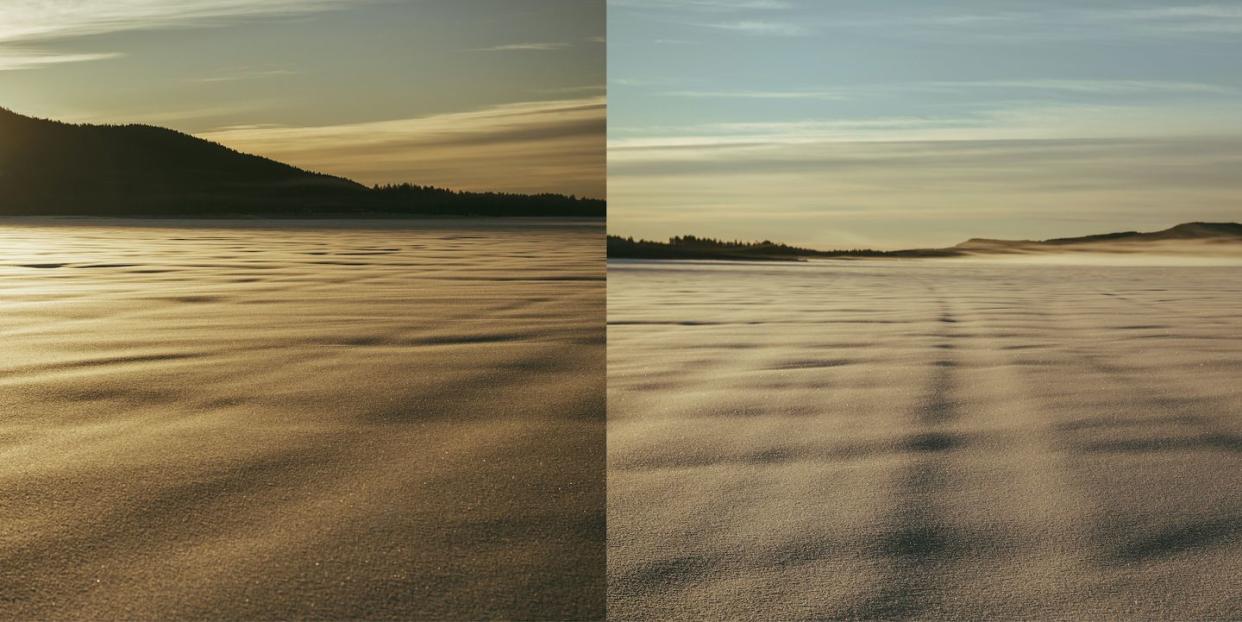
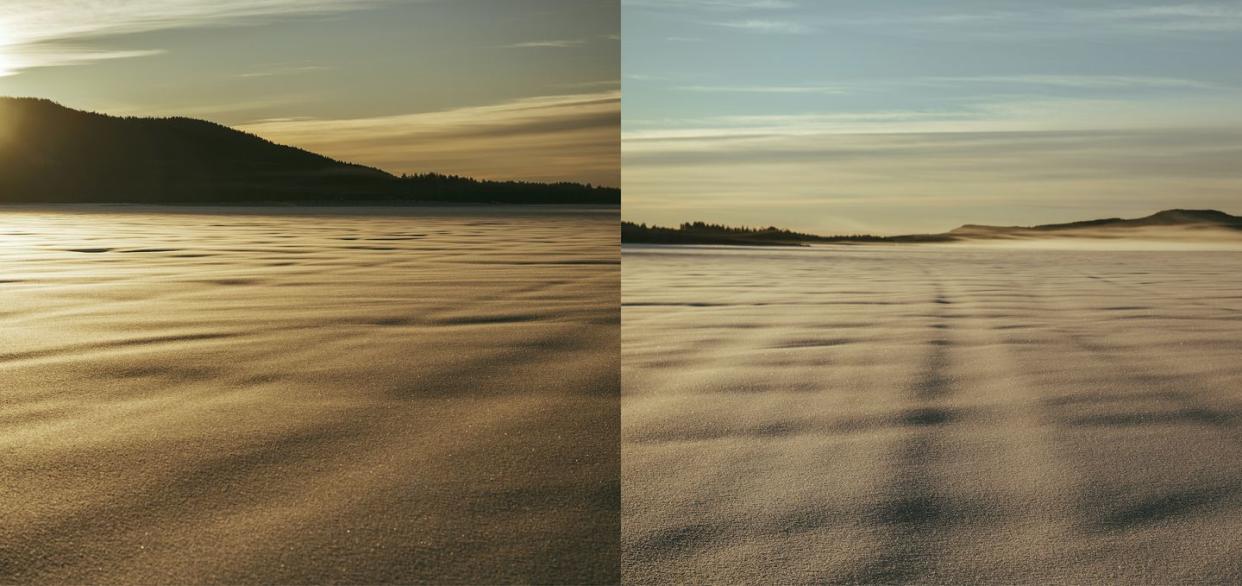
Finally, I found my loaner car in the parking lot next to the train station in Luleå, Sweden. Its tasteful, drab blue paint peeped out from beneath a fresh blanket of glinting snow. It was a Volvo, of course. What else but a Volvo would I use for a trip up half the length of this long, dangling digit of a country? The streets of Sweden are filthy with Volvos. The semitrucks are Volvos. The heavy-construction excavators are Volvos. The children are Volvos.
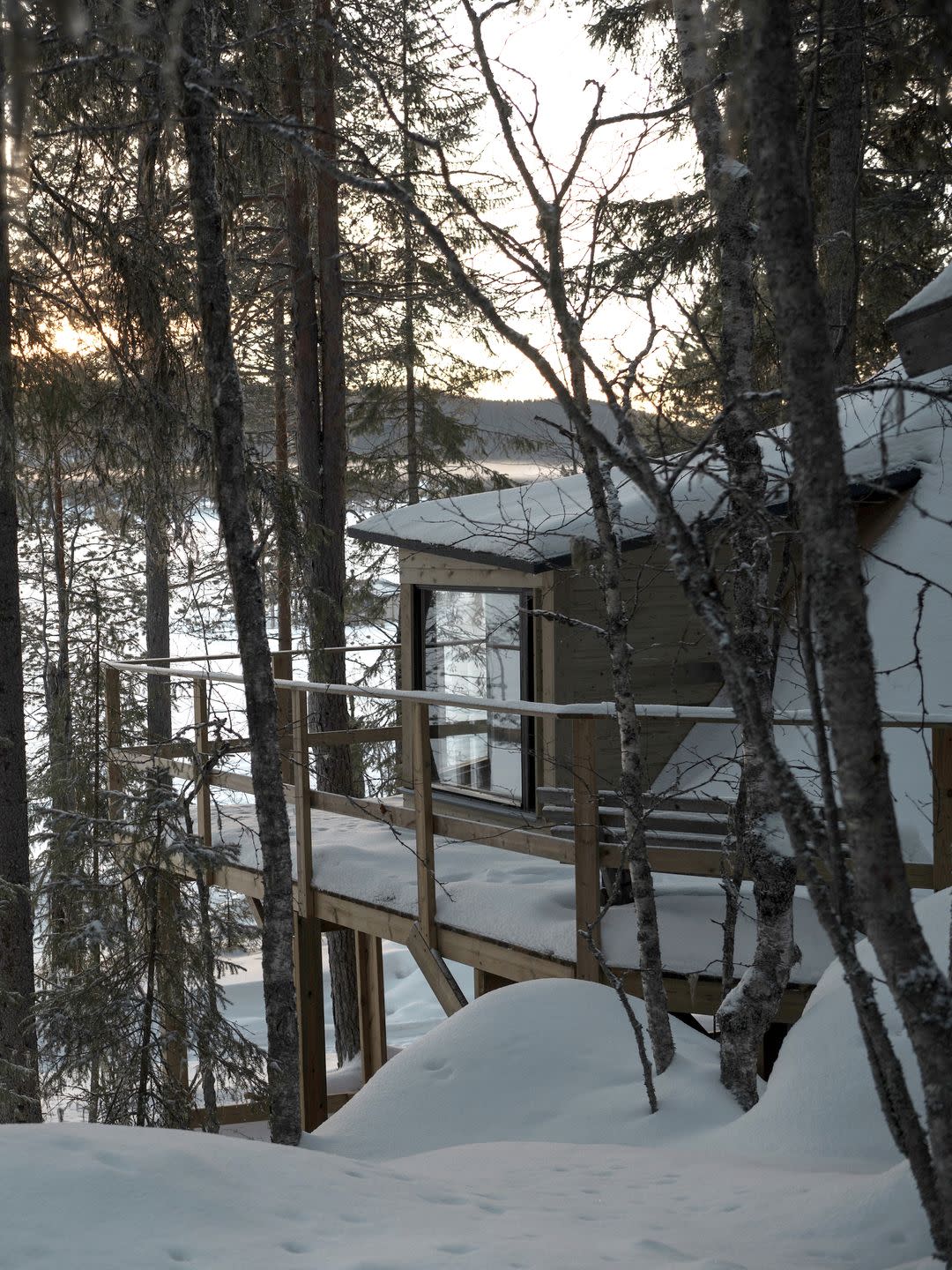
And not only did I have a Volvo in Volvoland, but I also had the most Volvo of Volvos among the assorted varieties of Volvos; I had a Volvo station wagon. It was a luxuriously long and low V90. Well, it was a plug-in-hybrid V90, but that wouldn’t matter because where I was heading, the electric outlets in the parking lot were for engine-block heaters, not for recharging fancy lithium-ion battery packs. I was going north of the Arctic Circle to check out the region that’s become Europe’s hot spot for cold-weather vehicle testing. If you drive a European car made in the past few decades, it was probably partly developed here. All I needed was a tank of gasoline, heated seats, and a set of studded Hakkapeliitta 9 extreme winter tires.
But wait, there was a sticker on this car. Actually, there were three of them, one on each rear flank and another on the hatchback. They read “Bilbolaget.com” in an awkward quasi-cursive font. Turns out, bilbolaget means “the car company” in Swedish, a language not often given to flowery rhetorical flourishes. It’s a car dealer. Or a car distributor. Or, well, it’s a car company of some sort. Whatever. I decided then that I would christen him “Bilbo Waggins.” And thus, we began our adventure together.
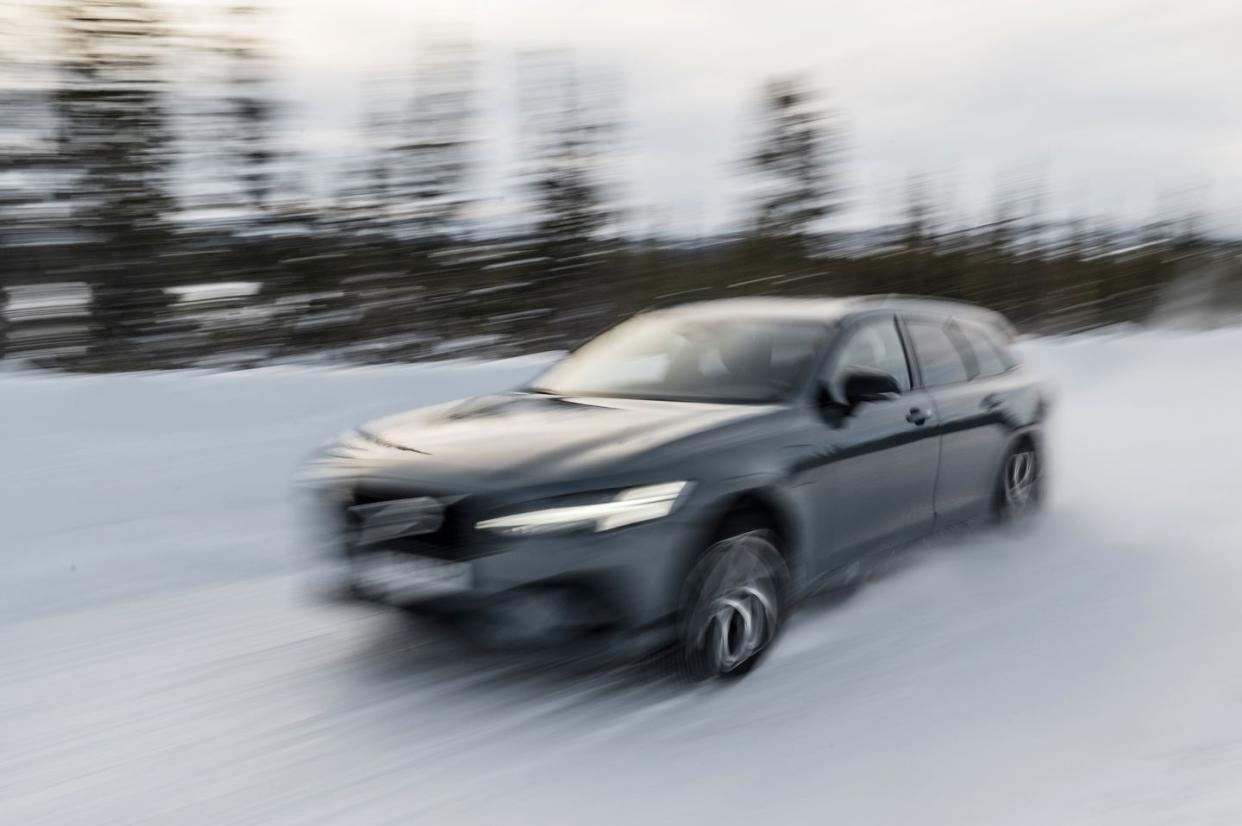
Before exploring the intricacies of split-mu surfaces and talking with development engineers about their highly tuned buttocks, I needed a bit of recovery from my long airplane flights and the two slip-and-falls I suffered walking one block to the car. Later, I had the following exchange with an engineer:
Dan: As you might be aware, I was just in northern Sweden being cold and slipping on the ice because I wore sneakers, which was not smart.
Engineer: No.
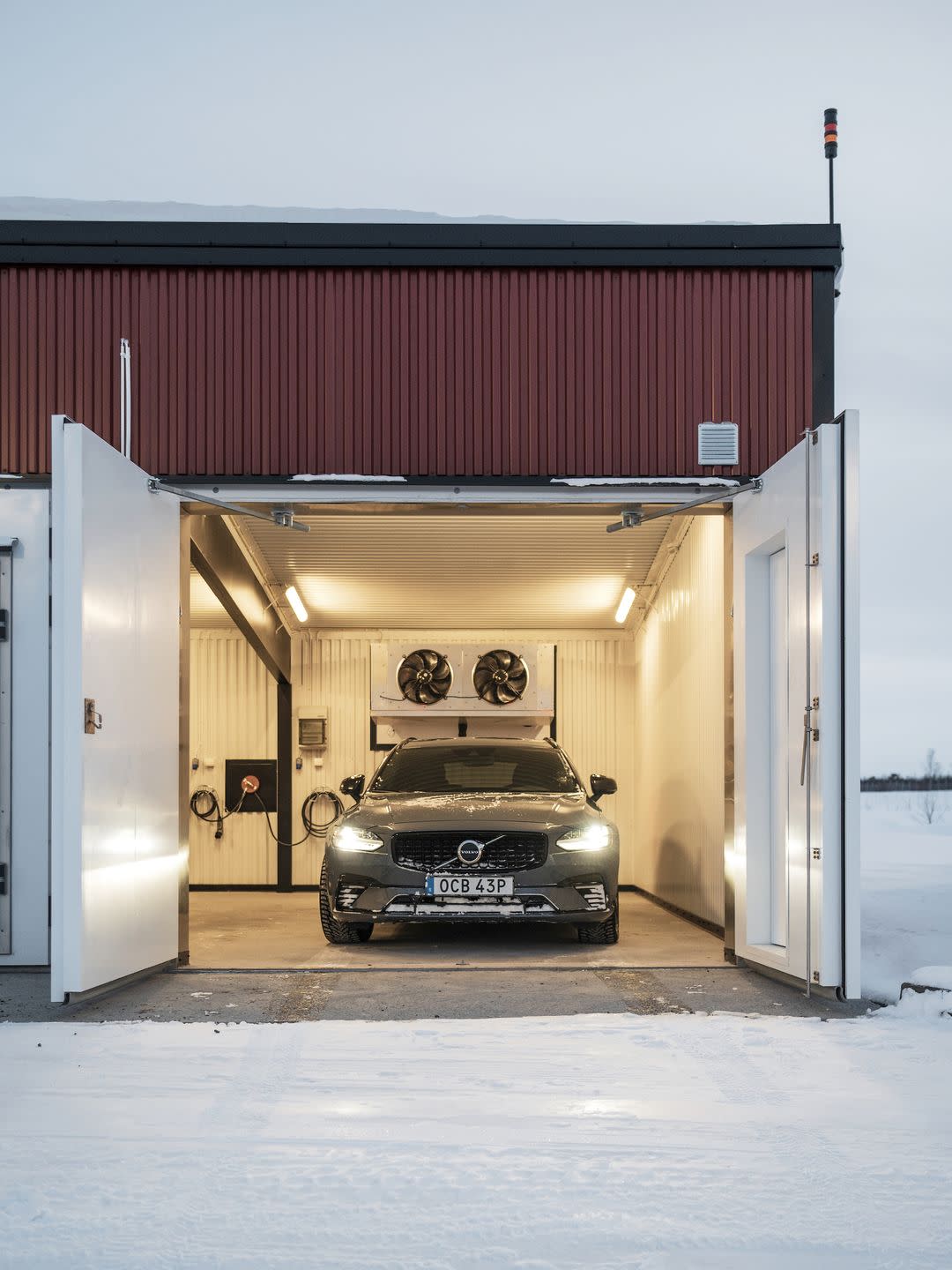
I headed on a quick 45-mile drive north of the Baltic Sea town of Luleå. It would be the last time I’d see pavement for a couple of days. I aimed my wagon down a series of narrow white paths bordered by three-foot-tall snow walls. I imagined I was bobsledding between country houses invariably painted either ketchup red or mustard yellow. I was headed for the Aurora Safari Camp in an area described to me by a Swede as “nowhere.” The Waze mapping app agrees. It simply gave up a few miles from where I needed to be and pretended my destination was in the middle of a road hemmed in by walls of birch, pine, and spruce trees. Eventually, I found the correct location. There, I was packed into an open fiberglass sled, then towed across a frozen lake by snowmobile, a young guy from Texas at the helm. Naturally. Near the opposite shore is a rudimentary building housing a sauna and a hole in the ice where one can take an ice bath. I asked my driver what he thought the chances were that when I jumped in, my heart would stop. “If you’re asking me that, then I think maybe you shouldn’t do it,” he replied. Fair.
The Aurora Safari Camp consists of a few cozy tepee-shaped rooms (which mimic the look of the traditional dwellings used by the area’s indigenous Sámi people), a community building and dining room, lots of trees, and intense quiet. The camp is one of a growing number of tourist spots in the northernmost region of Sweden known as Norrbotten. Most well-known (and Instagram famous) is the Icehotel, which is near the northern tip of the country and has been making guests smell like reindeer pelt for more than 30 years. But newer destinations nearer the Aurora Safari Camp, such as the Treehotel and the Arctic Bath hotel, cater to curious and moneyed travelers for whom modern Scandinavian architecture is part of the allure. Between 2010 and 2019, the number of guest nights in the region rose by 44 percent, according to the Swedish Lapland Visitors Board.
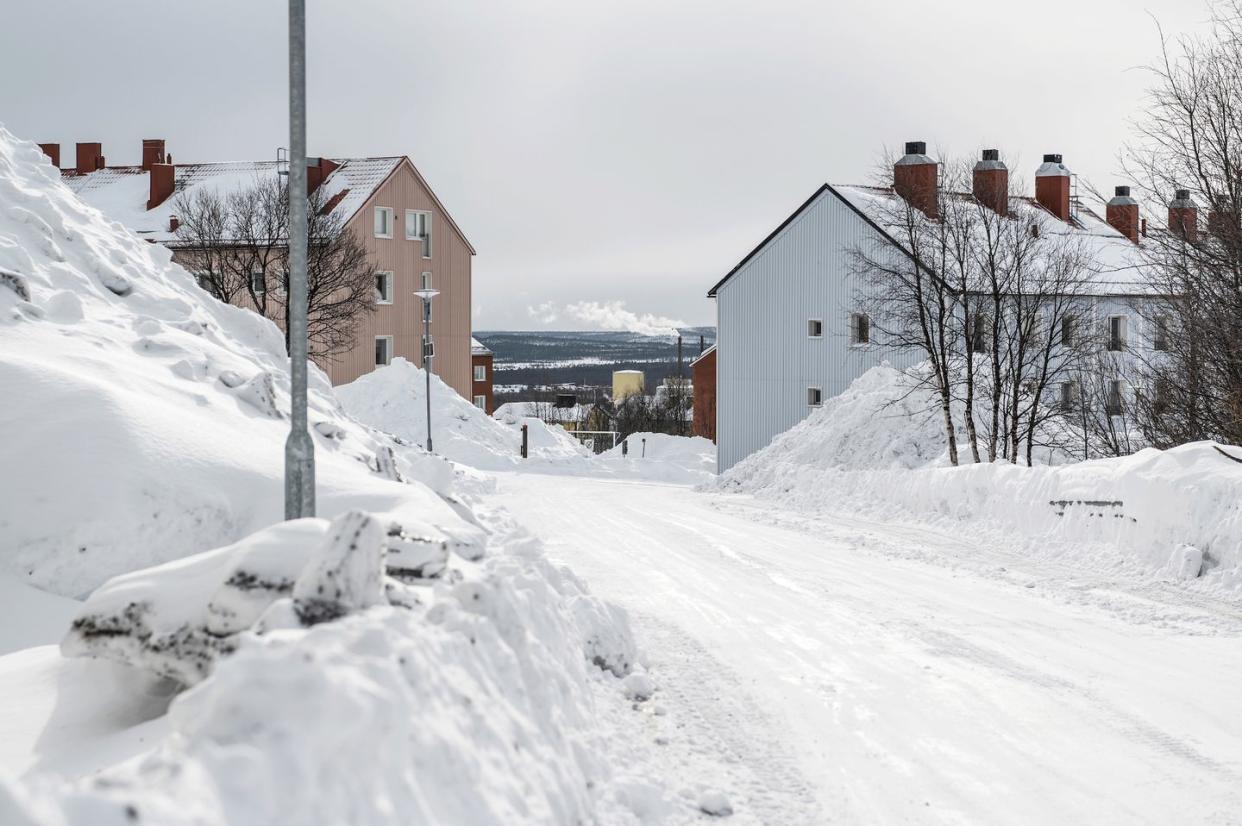
The biggest draw, apart from the novel experience of living within a snow globe, is the northern lights. The aurora borealis is Norrbotten’s current gold strike in a land that has long survived by exploiting its natural resources, including lumber and iron-ore deposits. The area might be one of the best places in the world to catch the celestial light show, but the aurora is a fickle bastard. Despite multiple trips to frigidly northern climes, I have never seen the lights. You probably should not travel there with me.

No problem. Bilbo, ace photographer Reto, and I had to depart early the next morning for Kiruna, Sweden’s northernmost town. So I spent my afternoon with Aurora Safari’s steely-gazed CEO, Jonas Gejke, riding snowmobiles across the blinding white expanse of the lake, then up into the neighboring thickly wooded hills, with a brief break to gnaw on slabs of dried reindeer and take swigs of hot lingonberry juice.
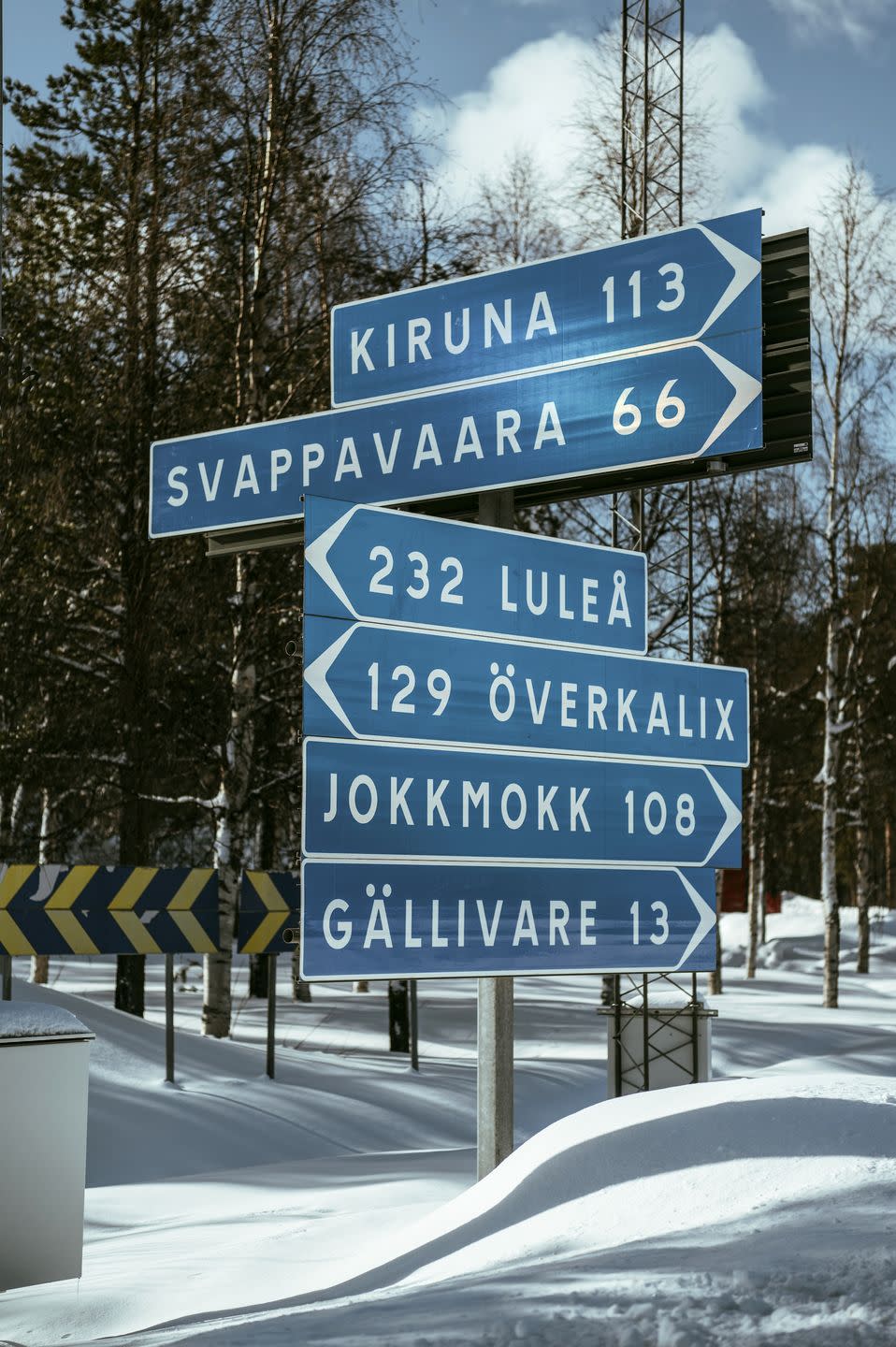
The 170-mile drive to Kiruna might be the quietest journey I’ve ever completed. Bilbo mushed serenely along a seemingly endless white chute of country paths. They don’t bother trying to melt the snow in the Arctic Circle. Road salt is useless at the temperatures regularly experienced here. Use studded tires. Drive reasonably. Also, mount huge auxiliary lights immediately in front of the grille (don’t worry, your car is not likely to overheat). It gets dark early here and stays that way. Plus, the lights look amazing.
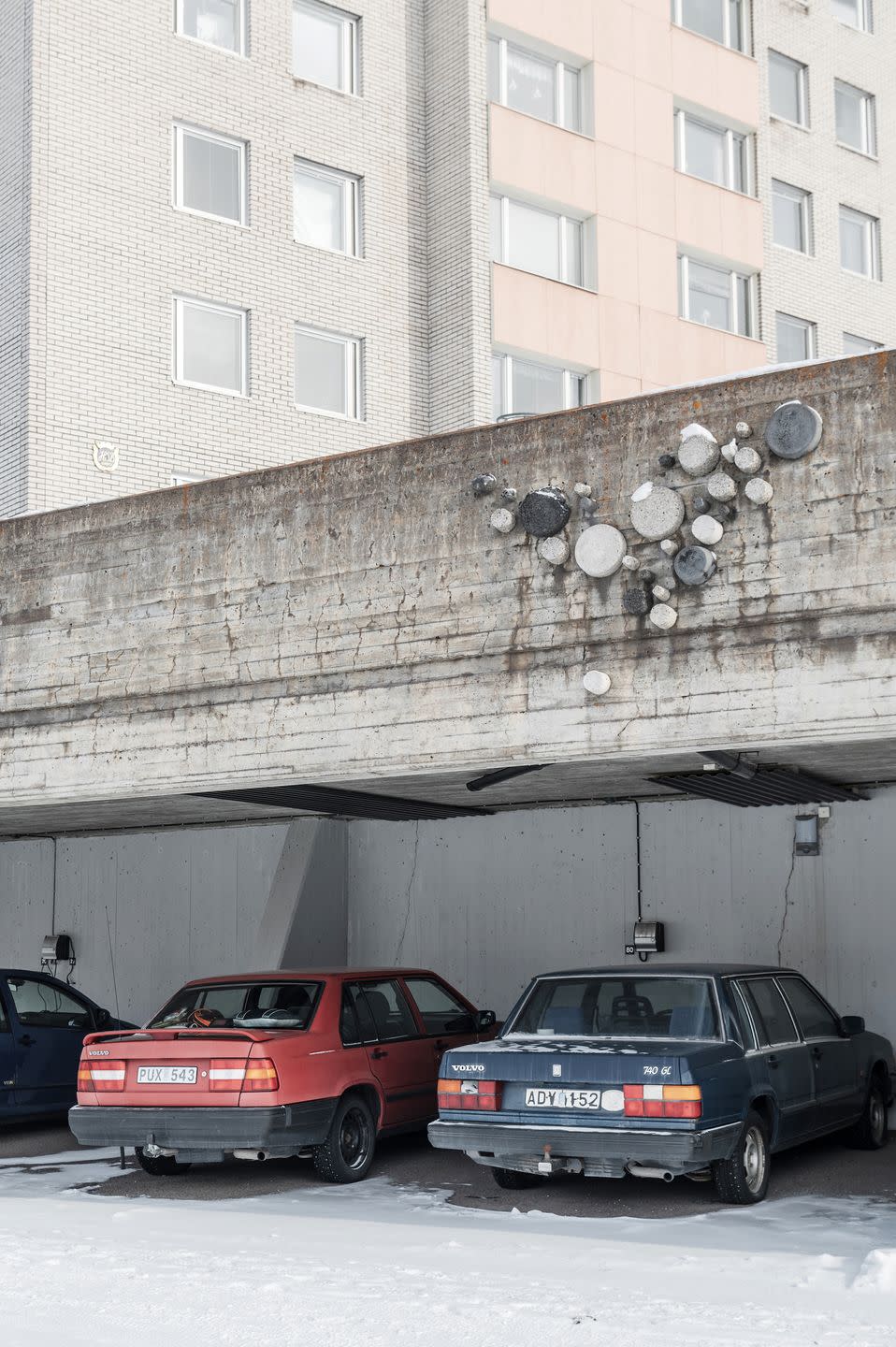
I initially planned to stop in the town of Jokkmokk (say “YUCK-muck,” and yes, that’s also the name of a $249 dining-room set from IKEA) to witness some cold-weather testing firsthand. Volvo has used the military air base at Jokkmokk for winter testing since the late Eighties. But security is tight these days. I was told I might be able to visit under some simple conditions: I could not drive on the premises. No photographs could be taken at the facility. I could not admit I was there. I could not acknowledge that Sweden is real. So I headed to Kiruna, where the company has maintained a site since 1995. That is if you believe such a place exists.
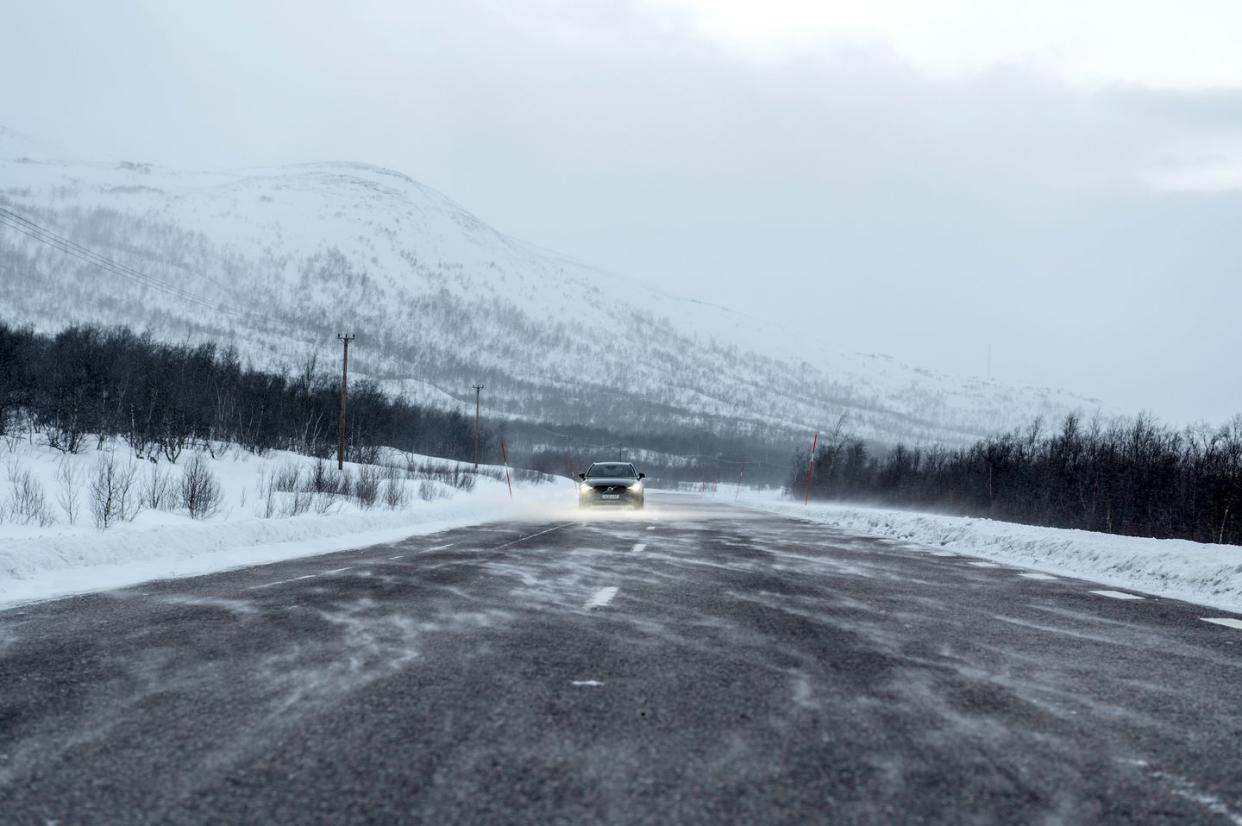
Northern Sweden is chockablock with automotive test facilities. Anywhere there is a lake that freezes in the winter can be a test facility. And that describes most of northern Sweden. Audi, BMW, Jaguar Land Rover, Mercedes-Benz, Volkswagen, and basically every other European carmaker tests here. So do some Asia-based manufacturers, such as Hyundai. Then there are the suppliers, such as Bosch. The boom in winter testing here started with suppliers as they developed anti-lock braking systems, and it’s grown unabated ever since [see “One Opel, Two Dietmars, and the Making of Arjeplog,” page 033].
But I wanted to stick with the home team. Jokkmokk and Kiruna aren’t the only locations Volvo uses. The company claims to have several secret test sites as well. The Kiruna facility, so near that thriving metropolis (about 23,000 area residents), is usually reserved for testing vehicles Volvo has publicly unveiled.

The proving grounds’ shop started as a helicopter hangar but has, over the years, been renovated and expanded to accommodate up to 15 cars. There are two permanent tracks: a short course of just less than a mile and one nearly five miles long. Both look basically indistinguishable from the public roads where we drove earlier in the day—with only slightly less traffic. The facility, which wraps around a gravel pit, is also home to three rows of “cold boxes.” Outside temperatures spike to a balmy 24 degrees Fahrenheit on the late winter day of my visit. Sometimes that is simply not cold enough. Pull a car into one of these climate-controlled boxes set to the equivalent of −15 degrees, and you will be stunned. Literally. Incidentally, March is considered the beginning of what northern Swedes call spring-winter, which is either a hopeful expression or a seriously depressing one.
Predictably, developers closely monitor temperatures here. Not for comfort purposes but because temps affect surfaces. Mounted to a conference-room wall at the shop, under COVID-19 precautions, is the printout of a graph titled Fluffaktor, which quantifies the fluffiness of snow at various temperatures. Very cold snow is referred to as fluffsnö, whereas snow nearer 32 degrees is called kramsnö, or “hugging snow.” And that is simply adorable.
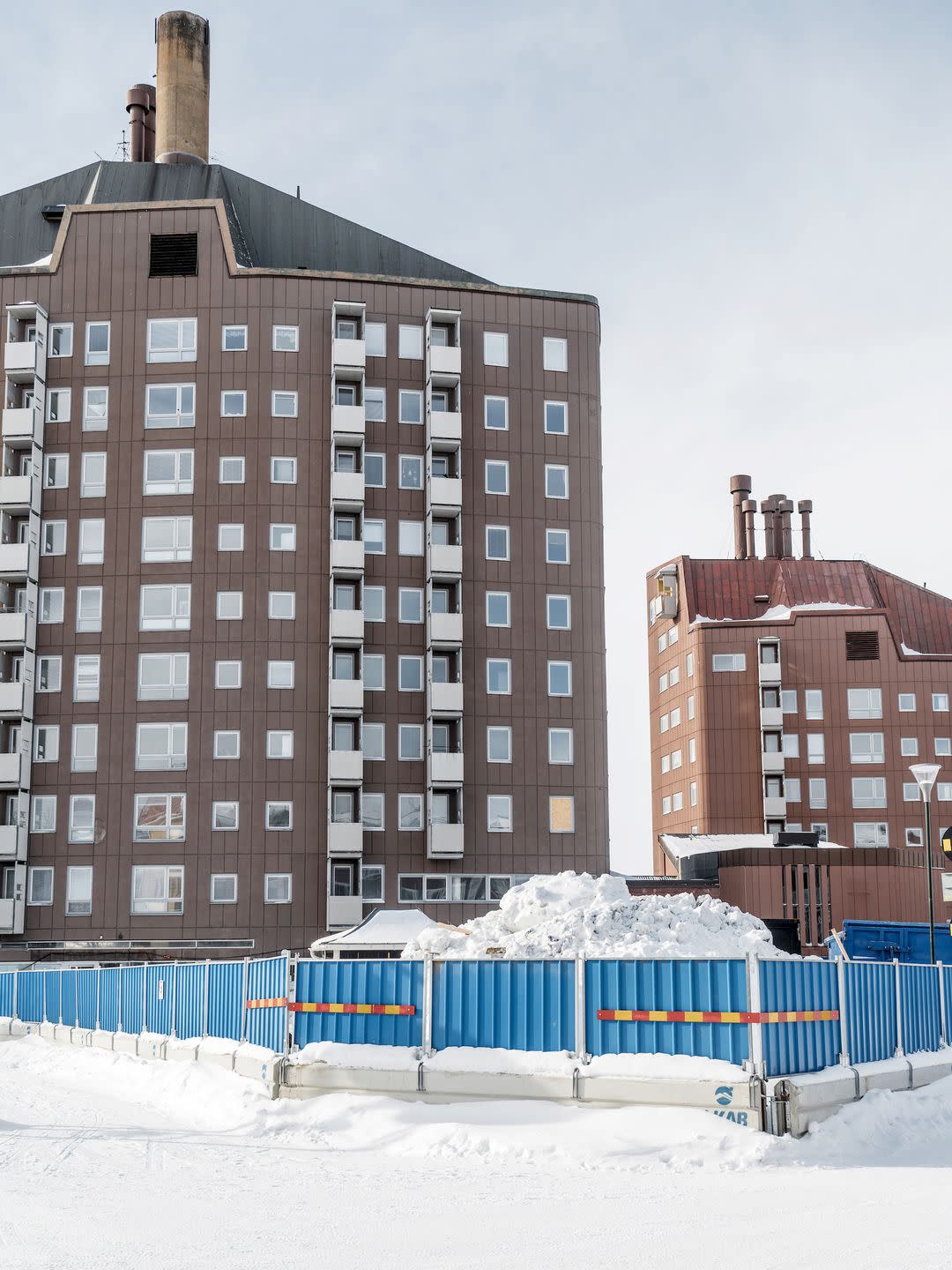
One full-time person oversees this operation: the courteous and stone-faced Kiruna native Stefan Johansson. (No, not that Stefan Johansson.) I can’t say the “testing” I did on the long track was exactly scientific, although I did activate ABS, traction control, and stability control almost continuously. Further, I acknowledge that my mucking about ended with Bilbo fully implanted and high-centered in a snow mountain quite some distance from the actual track. Luckily, this mountain comprised freshly fallen fluffsnö. Johansson, who’d left me alone to get photographs, returned to see me frantically trying to reverse out of the snow while Reto, waist-deep in the stuff, pushed fruitlessly on the front of the car. Busted.
Johansson says nothing while pulling a snatch strap out of his XC60. After yanking us out of the snow, he says flatly, “Did you get everything you needed on the test track?” I choose to interpret this as a paternal “I’m not mad, just disappointed.” But he might have just been asking if we’d gotten everything we needed on the test track. I will never know.
There is no permanent fleet of test cars at the facility. When a test needs to be conducted, the engineers, techs, cars, and equipment all are sent up from the Gothenburg headquarters in southern Sweden. The typical stay is two weeks. These visits have become a vital source of income for local communities. Former Arjeplog mayor Bengt-Urban Fransson has said, “When the international testers appeared, many of them naturally met local women, resulting in many divorces.” The engineers we spoke with assured us that no such fraternization occurs, noting that the wildest they might get is going skiing on their days off.
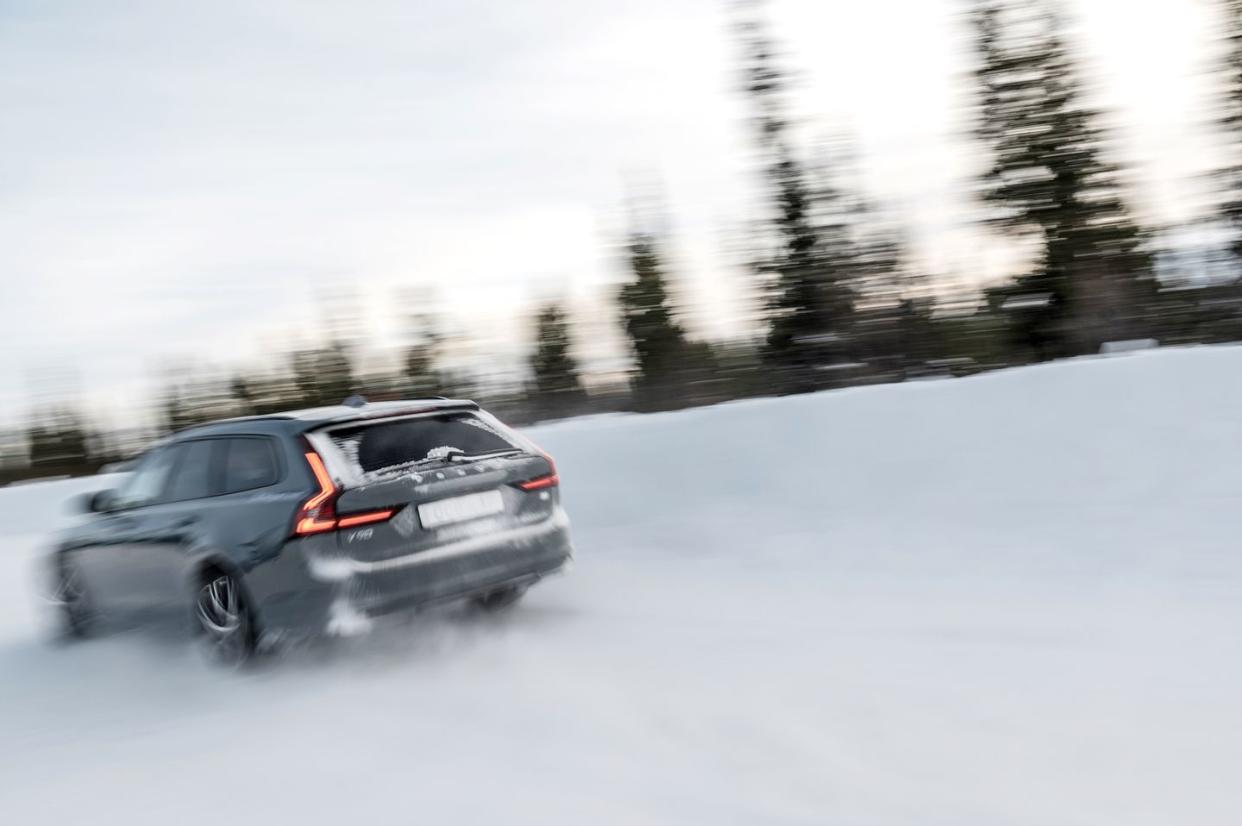
There are other things to do in the area, but not a lot. Kiruna sits beside (and above) the world’s largest iron-ore mine. The mine is the entire reason the town exists. And it’s also why the entire town of Kiruna is being torn down and rebuilt (or physically moved) a couple miles down the road. An expansion of the mine means the town will no longer be on safe ground. Homes, restaurants, pubs, stores, the old wooden church—it’s all got to go. A new development imaginatively called the new town has risen between the old downtown and the airport. It looks more like an upscale outdoor mall than a downtown. And it’s rendered in an architectural style I think of as Contemporary Northern European Stern: lots of steel and glass.
My last night in Sweden finds me at the Bishops Arms pub and hotel in the old downtown, a onetime haunt for visiting engineers. It might be a faux English pub, but it’s a comfy one, with warm wood beams, low ceilings, a fireplace, and a library. It sits only a block from buildings currently being demolished. Its days are numbered, and that makes me sad.
Our server had no such misgivings. “All of this will be gone,” I said, slapping the sturdy built-in bookshelves. She answered excitedly: “But we’re taking everything and putting it in the new town. And there we’ll have five floors of rooms, not just the one floor. It’ll be much nicer.” Her endearing optimism was shared by most of the people I spoke with there. I like that. I don’t understand it, but I like it.

Fifty years ago, a new job came to the little town of Arjeplog, Sweden. It was not reindeer herding or farming, traditional work here in this southern Sámi region, all the way down at the 66th parallel, right at the Arctic Circle. Nor was it working in the Nasafjäll silver mine across the Norwegian border, where indigenous Sámi people were conscripted into carrying ore by reindeer since the 1630s. The new gig was, strictly speaking, ice maintenance, though it grew to support one of the most important corners of the automotive industry.
All David Sundström and Per-Axel Andersson, who ran the local tourist flight service (imaginatively named Turist Flyg AG), knew was that some Opel engineers were coming to drive a car on their runway. This wasn’t the first time that car testing had been done up in the region. Opel had been testing around nearby Arvidsjaur since 1967, and both Saab and Volvo had been testing 70 km north of there since 1970. It was, however, the first time those Opel engineers, Dietmar Hackner and Dieter Pfieffer, would get onto the ice itself. Those Opel engineers had tried the ice at Kiruna, the more populated end of the line city a few hours to the north, but found the ice too thin and the snow too thick. They were unlucky, too, in Gällivare, still a few hundred kilometers north of Arjeplog’s Lake Hornavan. But they’d been told the ice there was good, and that the runway was plowed.
What they didn’t know is if the runway would support their car. After all, Turist Flyg only operated small aircraft. Would a heavy Opel Admiral break through the ice? The Dietmars shifted their Opel into “D” and let it ghostride out onto the runway. When it didn’t fall in, they went running after it.
This was the somewhat low-tech beginning of ABS testing, a natural fit for the lake as it was easy and safe to groom one side of the ice to be rough, another side to be slippery. Every possible low traction environment could be simulated on the ice, and that same winter the German company Teldix, later to be folded into Bosch, joined Opel in testing on Arjeplog’s frozen lakes. By 1978, its tech debuted as the first automotive anti-lock braking system in production, appearing on the Mercedes S-Class.
What was ABS testing in the Seventies and Eighties became stability control development in the Eighties and Nineties, and the taming of tippy SUVs in the boom years of the Nineties and Aughts. The more technologically advanced cars became, the more automakers needed this little village, one that wakes up when winter rolls in.
While the ice had been thick enough for that first 1973 Opel test, even their runway needed a great deal of work to make it functional for auto testing. It had snowed the night before, and Sundström and Andersson found the Opel engineers out in the morning with brooms and shovels, clearing snow. They had sweeping equipment on the back of their tractor, and they pitched in to help.
In the most direct way possible, Arjeplog’s tourist economy gained a new automotive element from that first Opel test. Anthropologist Elisa Maria López at the KTH Royal Institute of Technology tells me over a coffee that auto testing stands out in northern Sweden as, unlike mining, it is not an extractive industry. She knows people in Arjeplog, but her work is with the Sámi in Kiruna, where the largest iron mine in the world is operating at such a furious rate it is sinking the city above it, forcing people to relocate.
As those foreign auto engineers quickly discovered, working with these iced-over lakes is not as simple as driving on and figuring it out. The ice needs to be groomed. Standing on meter-thick ice, I watch tractors hum all day in these frozen valleys between the low, tree-covered peaks. They are plowing snow to make tracks, then scraping and grading the ice itself flat. Even the complete ice cover is managed and built up. Before I even arrived, local companies had been drilling through the ice to let water up onto the surface and freeze overnight.
“Every year at least one truck goes in,” a local snowmobile guide tells me. Everyone is always eager to get as early a start to the ice season as possible, and everyone is always pushing the limits. Nobody dies – there are escape hatches built into the roof of every semi truck operating here, and everyone drives with the window open early in the season. In the earliest days of the year, you drive with the whole door open, ready to bail.
It is big business. Some 150 million Euros enters the local economy from the late fall into the early spring, as Automotive News Europe reports. About 3000 people live in Arjeplog, a third of whom work directly or indirectly with cold weather testing, as the Winterkurier notes. So many engineers roll in that the population doubles over winter. I was there in March. People tend to work into April.
In the season, it’s easy to forget anyone there is Swedish at all. Rooms fill up with German speakers, on assignment from BMW or Mercedes. Those guys speaking French in the corner? Notice the Alpine jackets they have on. Striding through the Arvidsjaur airport, I overhear some Italian, only for it to be Ferrari’s chief test driver Raffaele de Simone waiting to board the same southbound plane as me. He’s testing some new prototype, he laughs in a matter-of-fact kind of way. After all, for him this is just another work trip. We end up in the same hotel in Stockholm, the last little threads of Arjeplog unraveling as we make our way home. –Raphael Orlove
You Might Also Like